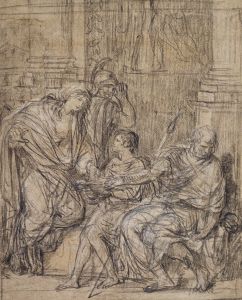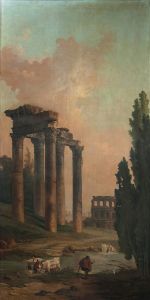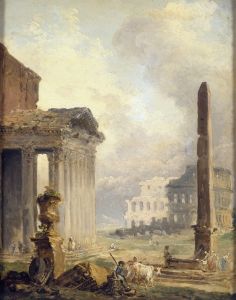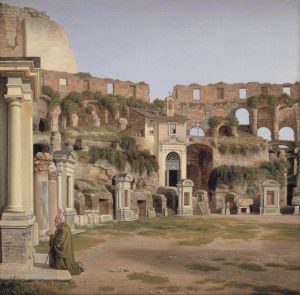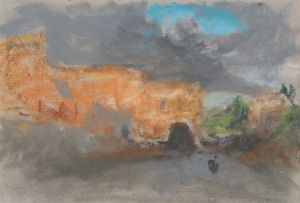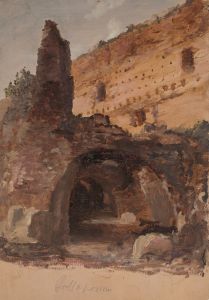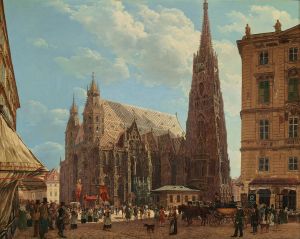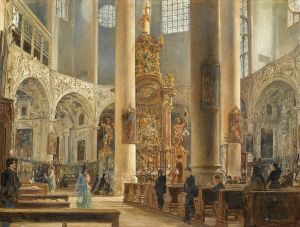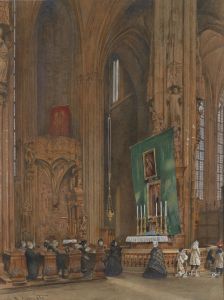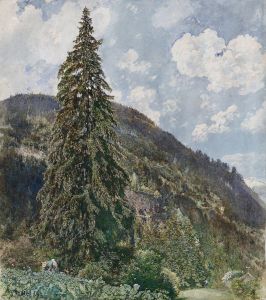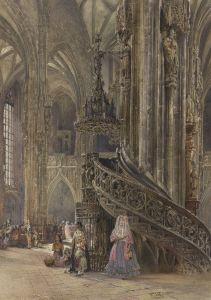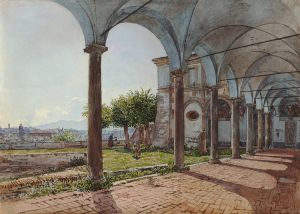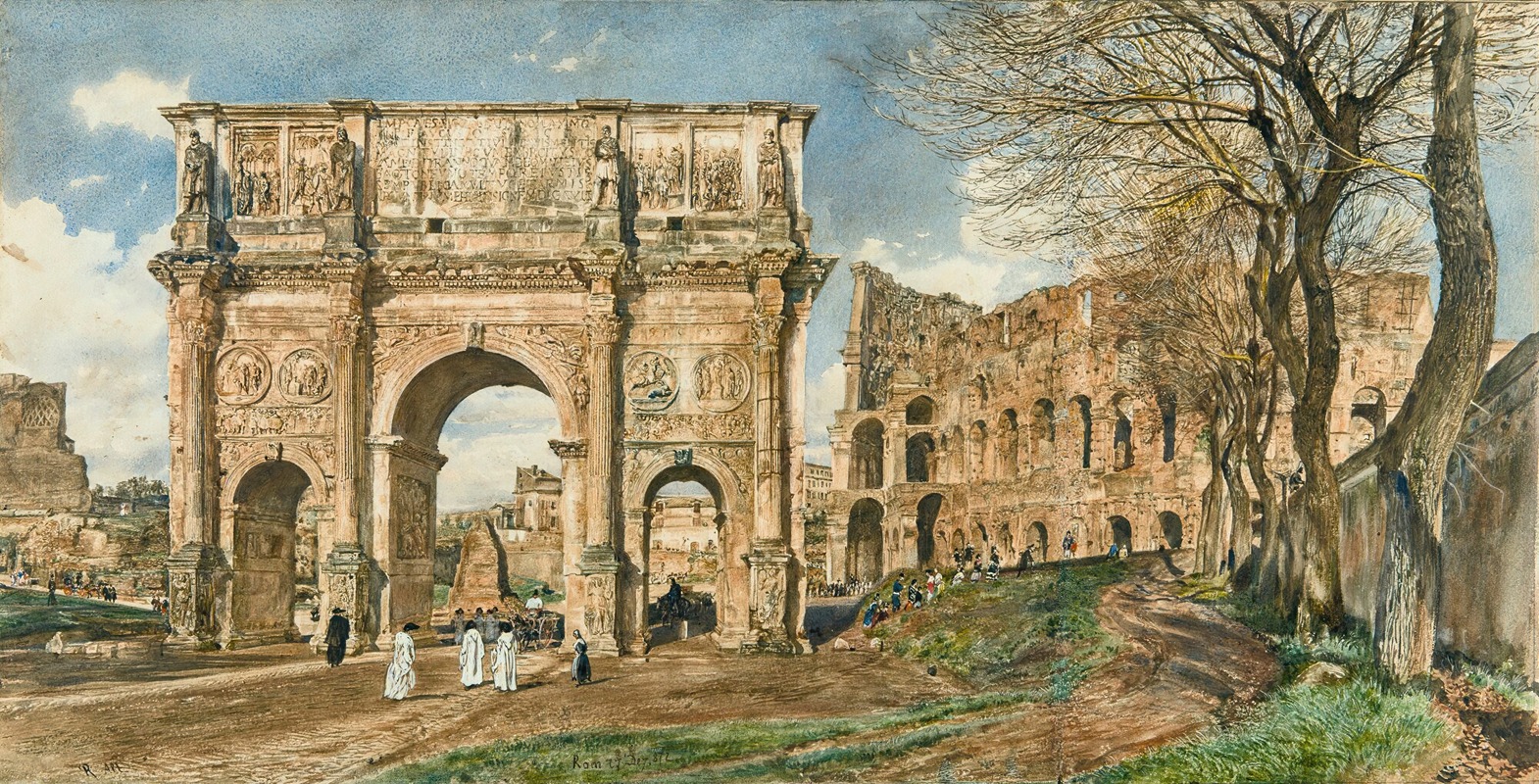
The Arch Of Constantine And The Colosseum, Rome
A hand-painted replica of Rudolf von Alt’s masterpiece The Arch Of Constantine And The Colosseum, Rome, meticulously crafted by professional artists to capture the true essence of the original. Each piece is created with museum-quality canvas and rare mineral pigments, carefully painted by experienced artists with delicate brushstrokes and rich, layered colors to perfectly recreate the texture of the original artwork. Unlike machine-printed reproductions, this hand-painted version brings the painting to life, infused with the artist’s emotions and skill in every stroke. Whether for personal collection or home decoration, it instantly elevates the artistic atmosphere of any space.
Rudolf von Alt, an Austrian landscape painter known for his detailed and realistic depictions of architecture and cityscapes, created the artwork "The Arch of Constantine and The Colosseum, Rome." This painting captures two of Rome's most iconic ancient structures: the Arch of Constantine and the Colosseum, both of which are significant landmarks in the history of Roman architecture and culture.
The Arch of Constantine, located near the Colosseum, is a triumphal arch in Rome, erected by the Roman Senate to commemorate Constantine I's victory over Maxentius at the Battle of Milvian Bridge in 312 AD. It stands as a testament to Constantine's rule and the beginning of a new era in Roman history, marking the transition from paganism to Christianity. The arch is notable for its rich decoration, which includes sculptures and reliefs taken from earlier monuments, a practice that was common in Roman times to associate new rulers with the achievements of their predecessors.
The Colosseum, also known as the Flavian Amphitheatre, is one of the most recognizable structures from ancient Rome. Commissioned in AD 70-72 by Emperor Vespasian of the Flavian dynasty, it was completed in AD 80 by his son Titus, with further modifications made during the reign of Domitian. The Colosseum is renowned for its massive scale and architectural ingenuity, capable of seating tens of thousands of spectators. It was used for gladiatorial contests, public spectacles, and other forms of entertainment, serving as a central hub for Roman social life.
Rudolf von Alt's painting captures these two monuments with a keen eye for detail and a deep appreciation for their historical significance. His work is characterized by a meticulous attention to architectural detail and a subtle use of color, which brings out the textures and forms of the ancient stone structures. The painting not only reflects von Alt's technical skill but also his ability to convey the grandeur and timelessness of Rome's architectural heritage.
Von Alt's choice to depict these monuments together highlights their proximity and the way they collectively represent the enduring legacy of Roman civilization. The Arch of Constantine and the Colosseum have both survived the ravages of time, standing as symbols of the power and influence of ancient Rome. Through his painting, von Alt invites viewers to reflect on the historical and cultural significance of these structures, offering a glimpse into the past through the lens of 19th-century artistic interpretation.
Rudolf von Alt's works are celebrated for their precision and ability to capture the essence of the locations he painted. His depiction of the Arch of Constantine and the Colosseum is no exception, providing a visual document that continues to inspire admiration for Rome's ancient architectural achievements. The painting remains a valuable piece of art, contributing to the appreciation and understanding of Rome's historical landscape.





